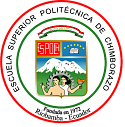Comparative analysis of propagation models for communications in underwater acoustic environments
DOI:
https://doi.org/10.47187/perspectivas.6.1.201Keywords:
Models, Distance, Losses, Depth, Propagation, LightningAbstract
This paper presents a comparative analysis of the propagation modes with respect to the importance of the shape of the sound velocity profile, and also to determine the transmission loss of the acoustic field generated by an acoustic wave propagating in water.
These modes are used to obtain the graphical representation of the transmission loss depending on distance and depth. The
respective graphs are obtained as a result of their simulation taking into account the propagated mode and the lateral contribution of the wave, thus with the parameters that are exposed can determine the most efficient model when used in acoustic propagation. The comparative lies in seeing the details of each model and in such a way to observe, to be able to take into account in addition to the efficiency the errors that can also exist, in addition to it in conjunction with tiny details subscribed, to learn several theories to arrive at a propitious result
Métricas
References
P. C. Etter, «Setting,» de Underwater acoustic modeling, Boca raton, Taylor & Francis Group, 2018, pp. 1-2.
A. R. Pau, «defensa,» 21 03 2022. [En línea]. Available:
https://www.defensa.com/defensa-naval/sistema-comunicacionacustica-submarina-permite-conexion-entre.
S. e. práctico, 2019. [En línea]. Available:
https://www.saberespractico.com/curiosidades/que-es-la-velocidaddel-sonido/. [Último acceso: 28 06 2023].
Peralta Rodolfo y Piccolini Carlos, «Graduation Final Project to obtain the degree of Electronic Engineer.,» RINFI, Mar de Plata, 2022.
F. Zapata, «Velocidad de sonido,» 26 octubre 2019. [En línea]. Available: https://www.lifeder.com/velocidad-del-sonido/. [Último acceso: 24 5 2023].
S. J. L. J. S. William Moebs, «Velocidad del sonido,» de Física universitaria volumen 1 , R. UNIVERSITY, Ed., Houston, Texas 77005, OpenStax, 2021, pp. 866-868.
X. Lurton, «An introduction to underwater acoustics,» 2010, p. Capitulo 2.
M. S. Arnedo, Velocidad del sonido, Universidad Carlos III de Madrid: MindTouch®.
J. M. Fiore, «Manual de Laboratorio - La Ciencia del Sonido,»
California.
Á. G. y. R. Domínguez, 2013. [En línea]. Available:
https://www.ugm.org.mx/publicaciones/geos/pdf/geos13-2/ecuaciones33-2.pdf.
C. a. M. equation, «conectronica,» 09 06 2010. [En línea]. Available:
P. R. a. P. Carlos, «Generic speed profile,» Mar de Plata, 2022.
T. S. y. T. T. M. Suzuki, Digital Acoustic Image Transmission System for Deep-Sea Research Submersible, M. t. O. Through, Ed., Newport: OCEANS' 92, 1992.
S. S. a. M. Zuffo, «La reflexión de la luz: especular y difusa,» QUEHACER EDUCATIVO, p. 44, 2017.
J. Aparicio, « Study of channel models for underwater communications,» Alcalá, Madrid.
A. K. y. S. Yauchi, «Sistema de comunicación acústica para robots submarinos,» OCEANS' 89, 1989, pp. 765-770.
C. R. Guerra, «digital,» [En línea]. Available: https://digital.csic.es/bitstream/10261/4865/1/Ranz_RA.pdf. [Último
acceso: 29 05 2023].
M. S. y. J. Mercer, Colossus Revisited: A Review and Extension of the Marsh-Schulkin Shallow Water Transmission Loss Model, University of Washington: APL-UW 8508, 1985.
A. D. D. y. A. H. Y. Fabiola. [En línea]. Available: http://sappi.ipn.mx/cgpi/archivos_anexo/20070053_4488.pdf.
P. E. E. C. SUPERFICIAL, «tesis.ipn,» [En línea]. Available: http://tesis.ipn.mx/handle/123456789/17751.
C. D. González, «Nuevos horizontes en la Detección Acústica Submarina,» EJÉRCITOS, pp. 3-5, 2022.
Downloads
Published
How to Cite
Issue
Section
License
Copyright (c) 2024 Stalin Bolivar Molina Molina, Erika Viviana Ñaupa Shagñay

This work is licensed under a Creative Commons Attribution 4.0 International License.
Copyright
The authors of the manuscripts will retain their copyright on their articles published in Pespectivas Journal. These rights allow the authors to present their manuscripts in public, prepare derivative works, reproduce them physically by printing and distribute them on their social or research networks. These rights will remain unchanged as long as the authors respect the publication and free access policy of Perspectivas Journal.
Publication Rights
Perspectivas Journal reserves all first publication rights on each of the articles that the authors have sent to its review and publication process. It implies that authors will only exercise their copyright if they state the source and origin of the publication correctly, mainly when they distribute, share, present, or use their articles' total or partial content.














